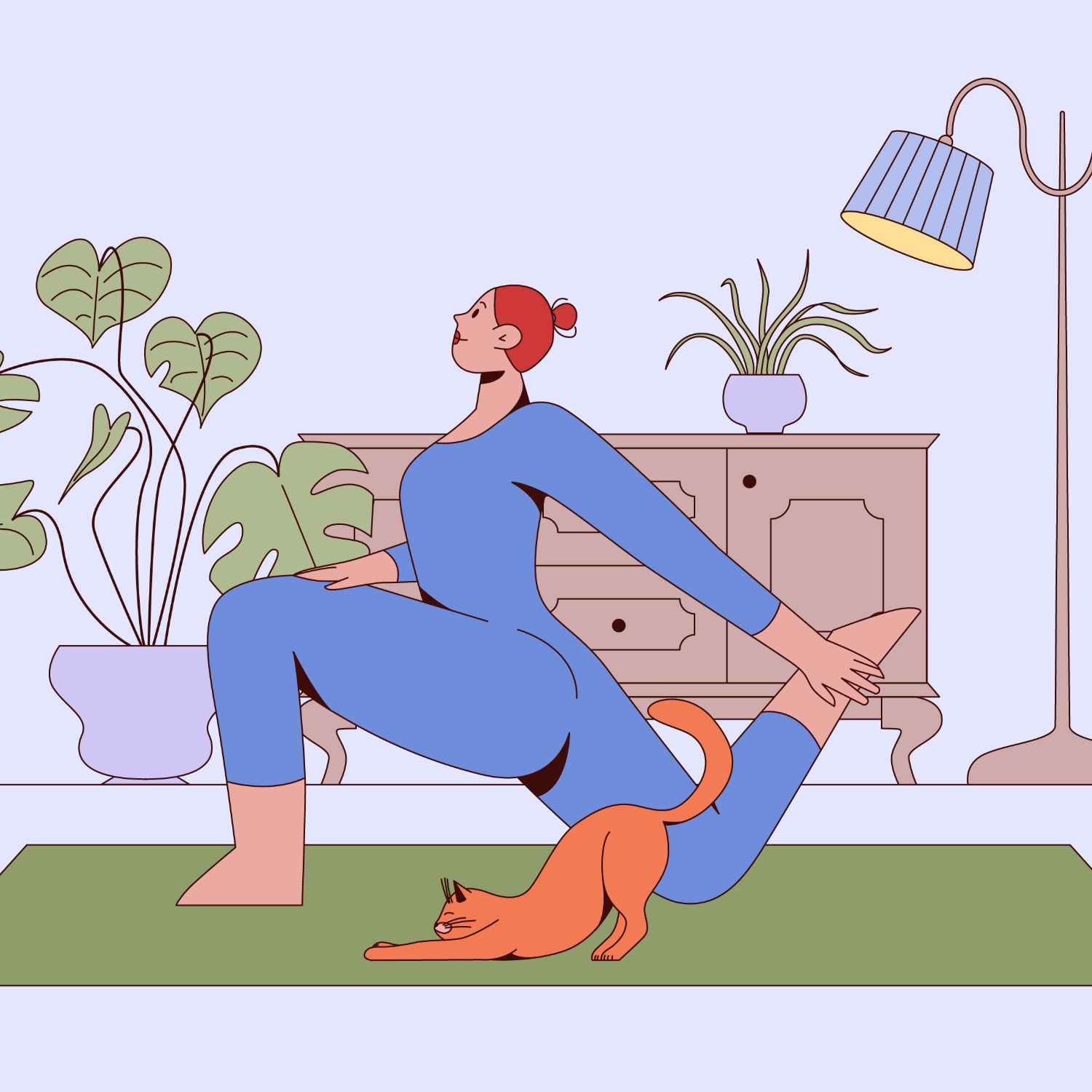You may think having flexible hamstrings is a badge of honor for outdoor athletes. And while you’re not exactly wrong, not everyone needs to have Cirque du Soleil-level stretching abilities to succeed at their sport. However, if you’re starting to experience pain in your lower back, knees, and hips, experts say that it may be time to give your hamstrings some relief.
Your hamstrings are complex: they’re comprised of three large muscles in the back of your thigh, stretching from your lower knee to your hip. “The hamstrings’ main function is to bend the knee and extend the hip, which is key for various everyday activities such as walking, running, and jumping,” says Louis Chandler, an Alo Moves trainer in Los Angeles, California.
In other words, these mega-muscles support all of those triathlons, marathons, and hikes. And when they get stiff, all of your everyday tasks—like walking or bending over—may become more difficult.
If you favor explosive workouts, such as high-intensity interval training (HIIT) and sprinting, you’re likely familiar with hamstring pain. Injuries to the back of the leg are the most common non-contact injuries in professional sports and are extremely likely to recur. However, focusing on hamstring mobility and flexibility can keep these pesky injuries away and allow you to move through your day and your go-to workouts without pain.
3 Signs That Your Hamstrings Need Some Additional Support
If you’re not sure about the state of your hamstrings, worry not. Below, Chandler offers a few clear giveaways that it’s time to pay more attention to these muscles.
1. You’re Experiencing Lower Back Tightness and/or Pain
In some ways, the human body is like a house of cards: pull out the jack of hearts or the two of spades, and suddenly, the whole structure topples. While the anatomical equivalent isn’t quite that dramatic, muscle tightness in one area of the body can lead to overcompensation in other parts.
For example, Chandler says that inflexible hamstrings can cause your lumbar spine, or lower back, to take on extra work as you walk, sit, and go about your day. “The tighter the hamstrings, the more they pull on your sitting bones, tilting your pelvis backward,” he says. “This has a negative effect on the alignment of your spine.” Over time, this results in lower back pain.
2. Your Knee Hurts
Since your hamstring’s three muscles extend all the way to your lower knee, you may experience some pain in that joint due to a lack of flexibility. When those bands of tissue are tight, it can hinder your range of motion. Your knee may respond by pulling on that hamstring, which can lead to a slew of injuries, including osteoarthritis.
If everyday movement makes your knee(s) ache, your hamstrings are practically begging to be stretched.
3. Your Hips Feel Tight
That tilt in your pelvis doesn’t just affect your lower back. The imbalance can also contribute to stiffness in the hips, as they overcompensate for your rigid hamstrings by supporting your lumbar spine.
3 Expert-Approved Hamstring Stretches
Here’s the good news: stretching your hamstrings is an easy practice to incorporate into your day. Waiting for your microwave burrito to be ready? Drop into a quick forward fold and pet your cat until the timer goes off. Meeting your running buddy at the park? Place one foot up on a bench and reach for your toes.
If you want to take a more intentional approach to your routine, Chandler says you only need three stretches and five minutes a day. Even if you consider yourself completely inflexible, these movements will offer you some much-needed benefits.
1. Towel Hamstring Stretch
“This is great for clients who may not have the best mobility and struggle to reach toward their toes,” Chandler says.
How to Do It:
- Sit on the ground with your legs extended in front of you.
- Wrap a towel, yoga strap, or even a sweatshirt around one foot and gently pull it back towards you, creating a stretch in your hamstring.
- Hold for 30 seconds and switch to the other leg.
2. Simple Hamstring Stretch
You’ll feel a deep stretch in the back of your legs with this simple move.
How to Do It:
- Sit down on the floor.
- Extend both legs in front of you.
- Lengthen your spine, straighten your arms, and reach forward as far as you can without bending your knees.
- Hold for 15 to 30 seconds, keeping your back straight and your core engaged.
3. Standing Forward Fold
This move will give you a nice stretch in your hamstrings and your lower back.
How to Do It:
- Come to a standing position.
- Bring your feet shoulder-width apart or as wide as feels appropriate for your body.
- Hinge at your hips and reach for your toes, maintaining a slight bend at your knees if necessary.
- Aim to have your chest rest on the tops of your thighs.
- Hold for 15 to 30 seconds.
Want more of Outside’s Health stories? Sign up for the Bodywork newsletter.


